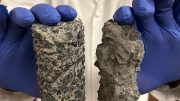
New tests may make it harder to trace outbreaks of food poisoning back to their source. Credit: Flickr / astairin
Some new diagnostic tests for foodborne pathogens like Salmonella, Campylobacter and Escherichia coli hinder the ability of public health officials to detect outbreaks. The problem is related to the inability to trace the contamination to its source.
In the past, doctors routinely tested for potential bacterial culprits using stool samples in labs. An isolate would then be sent to local, state or federal officials, who would have the DNA tested to determine the exact strain. This information was entered into the PulseNet system, which allows health officials to see if samples from newly diagnosed patients matched the ones in the database. This could help in determining the source of contamination.
Now a shift in the types of tests run in local labs has resulted in less information being shared with other health officials. In 2010, 15% of cases were using nonculture tests, which are quicker to provide results, less expensive, and might not require stool samples. Moreover, some of them can spot pathogens that the culture-based tests do not diagnose.
These new tests mean that officials aren’t receiving the isolates required to do the DNA fingerprinting, which is how health officials identify the source of contamination.
According to the CDC, one in six Americans becomes sick from foodborne disease each year, and 3,000 die. Public health officials will need to come up with new ways to monitor and respond to new outbreaks. At present, no one is working on a test that can help officials trace outbreaks.
For gonorrhea, a disease for which most of the testing is done by nonculture tests, the CDC responded by setting up a surveillance project that allowed it to monitor the trends in new ways. In labs in 28 cities across the USA, cultures are run and isolates taken from samples collected from the first 25 men to have urethral gonorrhea each month. Using this data, health officials can still track outbreaks, but it is not yet clear whether this approach will work for foodborne pathogens.









Be the first to comment on "Diagnostic Tests Undercut Surveillance Abilities of Health Officials"